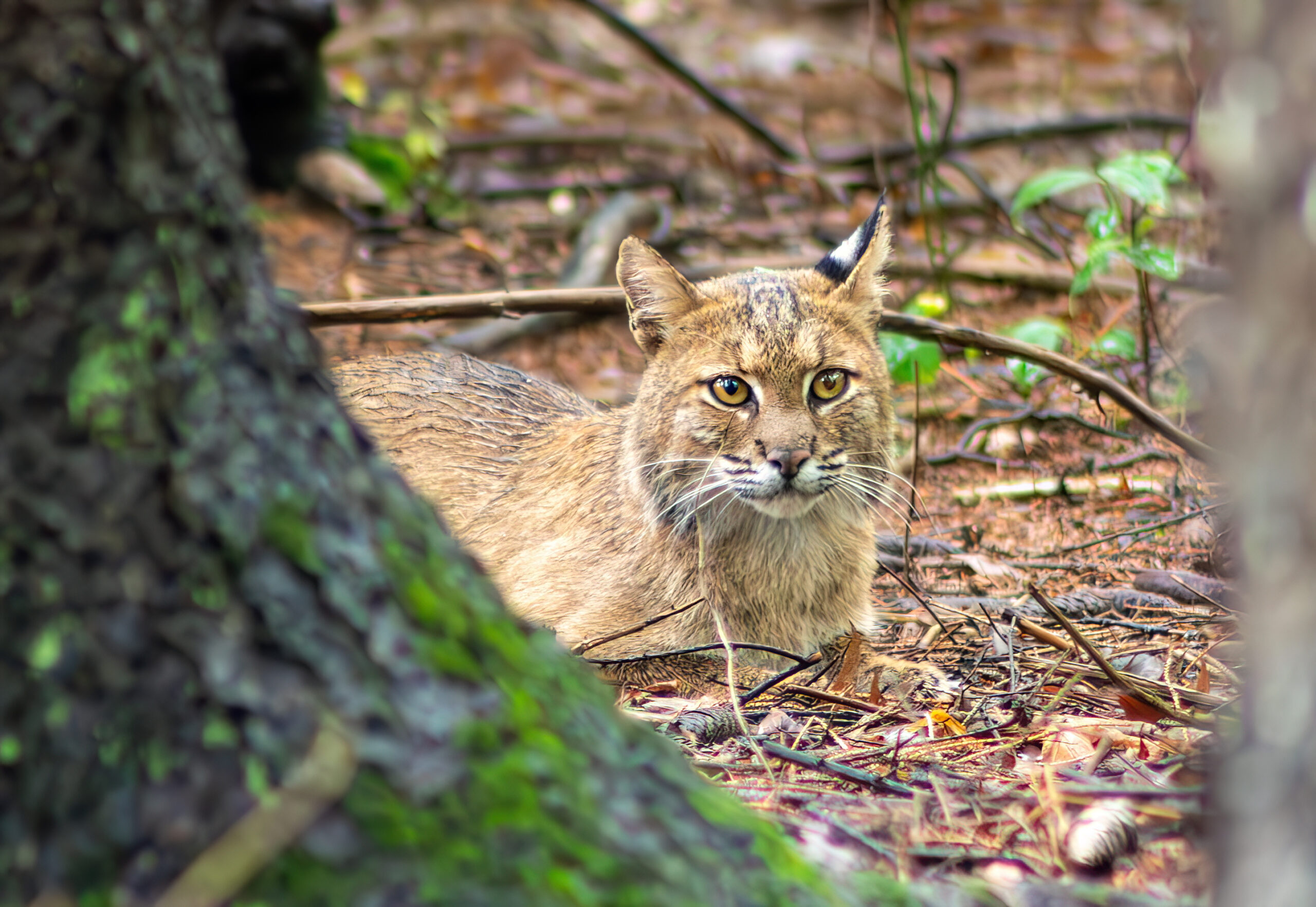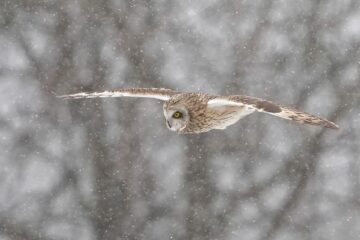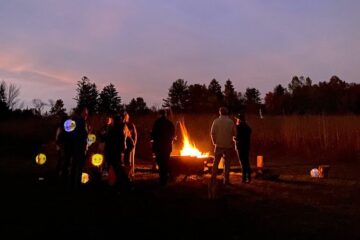
Photo by Lauren Theis
It’s fascinating to observe the wonderful variety of animals that make their homes here in the upper Raritan River watershed, including mammals, birds, reptiles, amphibians, and insects. One of the rarest treats is to catch a glimpse of the elusive bobcat, New Jersey’s only native wildcat.
An endangered species statewide, bobcats are distinctive for their short “bobbed” tails, tufts of black fur on their ear tips, and markings that range from tabby stripes to mottled spots. Bobcats are two to three times the size of a housecat – 18-25 pounds for a female and up to 38 pounds for a male. The average lifespan of a bobcat in the wild is about 12-13 years.
Bobcats are known to be extremely shy, so you probably won’t see them if they see you first!
I’ve been lucky enough to spot bobcats twice in the past few months, both in the early evening just before sunset. Bobcats are seen with increasing frequency on local “trail cams,” motion-detector cameras placed at strategic outdoor locations such as stream crossings.
Seeing bobcats is especially thrilling because these beautiful creatures nearly vanished from New Jersey over 50 years ago.
Thanks to state restoration efforts, populations are now rebounding. In the late 1970s, wildlife officials began trapping bobcats in Maine and bringing them back to New Jersey to help rebuild our dwindling population. From 1978 to 1982, 24 bobcats were released in rural areas north of Route 80 in Warren, Sussex, and Morris counties.
Though their comeback has been slow, bobcat populations have now spread well beyond the original restoration area. Bobcats need a habitat with plenty of room to roam and hunt, so the sightings in our watershed are an encouraging sign that land preservation and forest restoration efforts are working.
Bobcats have excellent vision, hearing, and soft pads on their feet, allowing them to sneak up quietly on their prey. They primarily hunt rabbits, mice, squirrels, ground-nesting birds, and wild turkeys, but will take a small or sick deer. They’re not known to be aggressive towards humans; to the contrary, they want to avoid us!
Bobcats make their dens in unobtrusive places: under fallen logs, in thick tangles of vegetation, in rock crevices, and beneath root masses of fallen trees. Litters of young are usually born in the spring, and kittens will stay with their mothers for their first year. But once the following year’s litter arrives, bobcat yearlings must strike out to find their own territory.
This spring and summer, keep your eyes peeled for bobcats most active at dawn and dusk. If you happen to catch sight of one, consider yourself fortunate indeed – many nature enthusiasts will envy you!
This piece is published in the Black River Journal’s 2025 Spring Issue on newsstands now!



